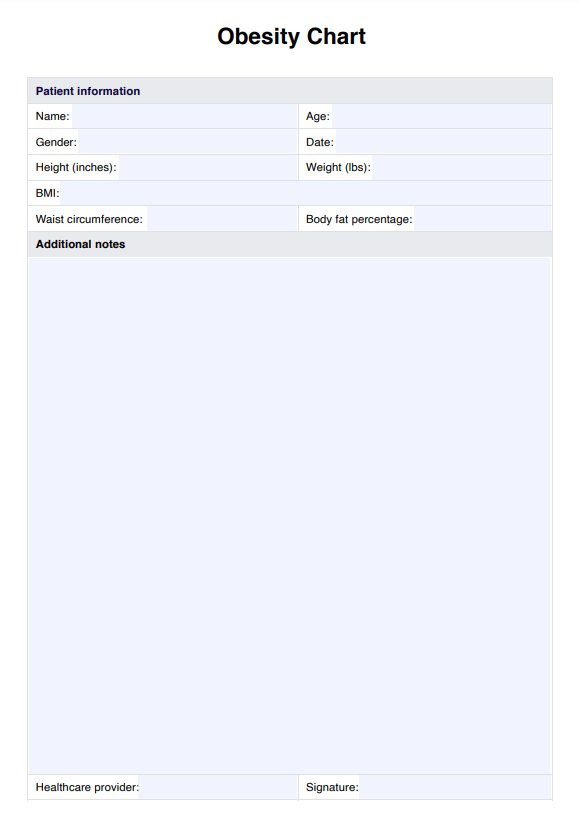Body mass index (BMI) and body fat percentage should ideally be measured regularly, especially for individuals at higher risk of obesity-related health issues. The frequency may vary based on age, health status, and weight management goals.

Obesity Chart
Access a free Obesity Chart PDF template. Use this to streamline your clinical documentation.
Obesity Chart Template
Commonly asked questions
Effective weight management strategies include adopting a balanced and healthy diet, engaging in regular physical activity, monitoring portion sizes, staying hydrated, getting adequate sleep, managing stress levels, and seeking support from healthcare professionals or nutritionists.
While a body mass index (BMI) calculator is a commonly used tool for assessing weight status and identifying excess body fat, it has limitations. BMI does not distinguish between muscle mass and fat mass, so individuals with high muscle mass may have a high BMI despite having little fat and being in good health. Additionally, BMI does not account for variations in body composition, which means it may underestimate the level of obesity in some individuals, particularly those with severe obesity, or overestimate it in others. Therefore, while BMI is valid for a general assessment, it should be considered alongside other measures to calculate BMI more accurately for weight management purposes.
EHR and practice management software
Get started for free
*No credit card required
Free
$0/usd
Unlimited clients
Telehealth
1GB of storage
Client portal text
Automated billing and online payments











